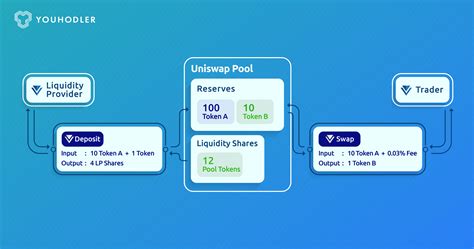Navigation liquidity pools: Guide to Solana (Sol) investors
The world of cryptocurrency has recorded enormous growth and enormous introduction over the years, with various coins such as Bitcoin, Ethereum and others who have recorded significant price fluctuations. However, some cryptocurrencies have succeeded in using a gap for themselves, which particularly takes special use or communities into account. Such an example is Solana (Sol), a fast, scaling and highly decentralized blockchain platform that has become popular with investors due to its unique properties and growth opportunities.
What are liquidity pools?
Liquidity pools are financial assets that enable dealers and investors to exchange more exchanges without having to keep the assets physically. They work to collect funds from different sources such as individual investors or institutional investors in order to create a single liquidity shares. This can be particularly useful for cryptocurrency markets, where high sales activities can lead to increased price fluctuations.
Navigate liquidity pools in Solana **
With the growth of Solana, many dealers and investors attract their fast transaction period, low fees and a robust ecosystem. As a result, Solana’s liquidity pools are becoming increasingly popular. Here you will find a guide to navigation through the liquidity pools on the Solana platform:
1. Select the right pool
Many liquidity pools are reached on Solanan, each with their own unique properties and advantages. It is one of the most popular pools:
* Balancer : Decentralized stock exchange (Dex), with which users can exchange a wide range of devices, including chips, NFTS and even Fiat currencies.
* CURVE : AGeither for liquidity pools, which offers access to several trading pairs and advanced market processing services.
* Sushiswap : A Dex that focuses on the provision of high-ranking interest rates for SOL-based stabrecoins.
Liquidity pools work on the basis of a “dosage fee” model in which users pay a small percentage for the pool. The fees vary depending on the pool and the liquidity provided by each user.
* Balancer : 0.5% feeder fee for trading pairs
* curve : 1.4% feeder fee on trading pairs
* Sushiswap : 3.2% feeder fee for the trade fee for couples
In order to maximize refunds, the performance of liquidity pools is of crucial importance. Here are some important indicators:

Liquidity **: The sum of the assets that are marketed on every pool
* Market capitalization : The total value of the assets stored in the pool
* Commercial volume : On average and the number of transactions carried out on each pool
As with all investments, diversification is the key to minimizing the risk. Consider combining the solution with liquidity pools on various stock markets or platforms.
* Dollar costs Average : Invest at regular intervals in a fixed amount of Sol
Cover strategies **: Use liquidity pools as part of a general insurance strategy such as long -term storage
The cryptovaluta Square is constantly developing, with new developments and updates every day. Note the latest news and announcements about the Liquidity Pools of Solana.
Social Media **: Follow the respected sources such as Coindesk, Cryptoslate and Solana Foundation
* Message aggregator -Websites : Use platforms such as cointelegraph or cryptoslate to stay up to date via messages and analyzes
Diploma
Navigating Solanas liquidity pools can be a profitable method for investors to diversify their portfolio.
